There are many different ways of acquiring a campervan. Several car manufacturers can sell you one from their showroom, third-party companies convert new and used vans, or you can do your own campervan conversion. A DIY conversion is a tempting option but there are lots of things to consider before taking the plunge.
There are pros and cons to building a DIY campervan. There can be cost savings, and you have more freedom to make the vehicle your own. Your practical skills could be a limiting factor, but there are ways of simplifying things for yourself.
In this guide, we’re going to look into all the things you should think about and weigh up before attempting to convert a commercial vehicle into a campervan yourself. Hopefully by the end, you’ll be better able to make a decision on if it’s the right course of action for you.
But before we go any further, we should clarify exactly what we mean by ‘campervan.’ We’re talking about a vehicle you can live in for a limited time, that started life as a van – or maybe a minibus. Motorhomes are a distinct thing. Most start life as a chassis-cab to which a separate body with living quarters is attached.
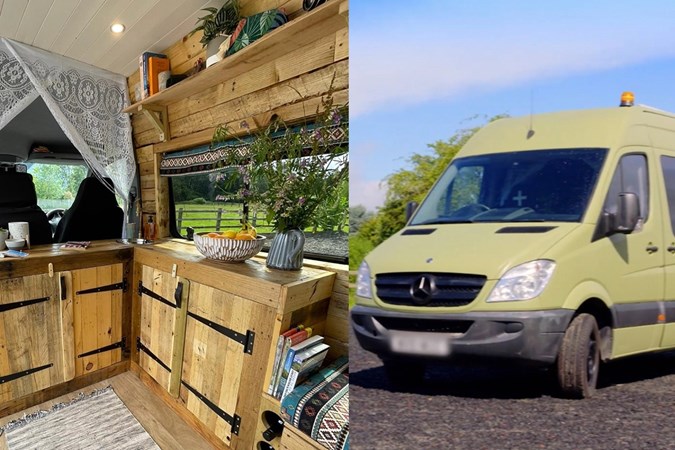
Why convert a van into a campervan?
It’s a question worth asking when there are so many campers available to buy new or used. Cost is the main reason most people do a DIY conversion. Even the cheapest new campers can cost well in excess of £40,000 – a base-model Volkswagen California costs £64,000. But if you buy an inexpensive used van, use low-cost materials and do all the work yourself, you can build a camper for a fraction of the price.
You also have more freedom. New campervans are based on quite a small selection of vehicles, and you’re severely limited in the choice of layout and décor available. Building your own gives you much more freedom in the vehicle you use, you can design the layout and decoration to suit your exact needs and tastes.
It’s worth noting that, while we’re focussing in this article on converting a van into a camper, there’s nothing to stop you converting any sort of vehicle. We’ve seen people living quite comfortably in people carriers, SUVs, mobile libraries, old buses, hearses, even a Smart ForTwo. But campers have a strict legal definition, which we look at next.
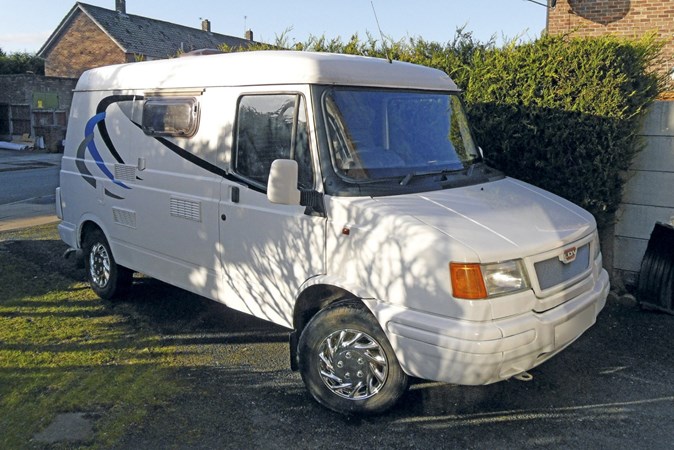
Is it legal to convert a van into a campervan?
Absolutely, but there are limitations on what you can do. Making significant changes to the vehicle’s structure, for instance, can cause headaches come MOT time, and it’s surprisingly easy to do that by mistake. Cutting openings for windows and skylights, for instance, could catch the vehicle’s body frame if you’re careless. Panelling over a minibus’s windows is a structural change, as well.
Then there are questions around how the vehicle is registered – that is, what taxation class it’s in. You could leave it registered as a van or, if it meets certain criteria, change its classification to ‘motor caravan’, as the Driver and Vehicle Licensing Agency (DVLA) calls campers and motorhomes. Do so and you can take advantage of higher speed limits as well as potentially lower insurance premiums, road tolls and ferry tickets. The authorities know how to treat the vehicle, as well.
A van must have the following for it to be re-registered as a motor caravan:
- A high-top roof (pop-top roofs don’t count)
- An awning attached to either side
- A separate door into the living area (a side-loading door counts)
- At least two windows on one side
- Motor caravan-type graphics on both sides
- Seats and a table
- Sleeping accommodation (can be fold-down seats)
- Cooking facilities
- Built-in storage
There are several other hoops to jump through and the vehicle may have to be inspected before re-registration is granted. You can read more about the process on the government website.
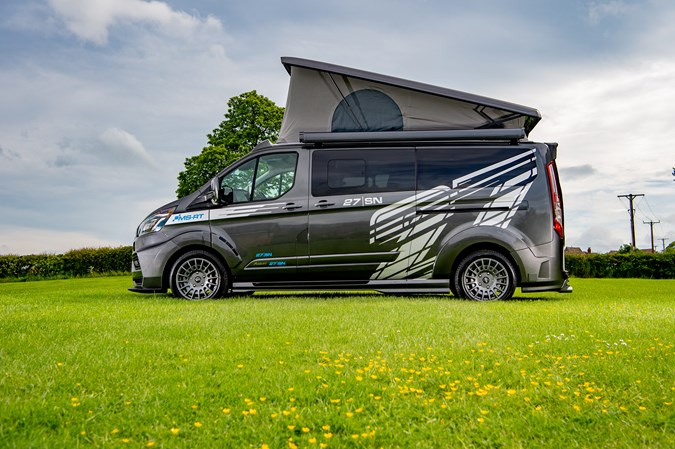
The requirement that the vehicle have a high-top roof excludes most small and medium-size vans. However, those vehicles can be re-registered as ‘private light goods’ (PLG), the same classification cars have. There’s a similar process to go through.
If you’re unsure about any part of the process, or whether your vehicle meets the necessary criteria, you can contact your local DVLA or Driver and Vehicle Standards Agency (DVSA) office for advice.
Note that any application to reclassify a commercial vehicle on its V5C registration document is likely to be rejected. That’s because the DVLA is primarily concerned about the V5C reflecting what the vehicle looks like, not what its purpose is. But it’s still worth trying – if your camper conversion meets all the criteria. Our page on campervan speed limits has more helpful information.
Do I need gas and electrical certificates for my campervan conversion?
You don’t need certificates for the gas and electrical installations in a DIY campervan conversion, and there’s nothing to stop you doing the work yourself. However, we strongly recommend getting your work checked by a professional with experience of campervans.
Companies that build campervans, though, do need proper certification for the gas and electrical systems in their vehicles. Ask to see them before buying a vehicle; if they can’t or won’t produce certificates, walk away.
Should I buy a new or used van for a campervan conversion?
There are obvious advantages to using a new van for a camper conversion. You’ll get the latest technology, it’ll meet current emissions legislation and be covered by the manufacturers’ warranty. You can even order most vans with camper conversion-specific electrical systems. However, we wouldn’t necessarily recommend using a brand-new van as the basis for a DIY conversion.
Most conversion specialists work exclusively with brand-new vehicles. The really good ones have strong relationships with their chosen van manufacturers and have a detailed understanding of what can and can’t be done, especially when tapping into the electrics. As a DIYer, you probably don’t have that knowledge and run the risk of doing something that voids the warranty.
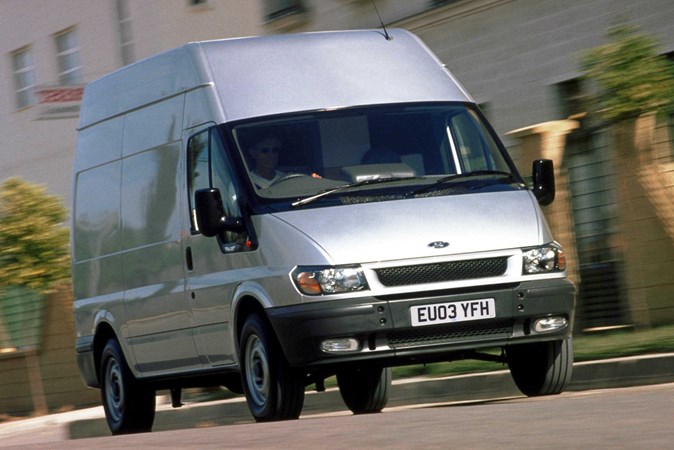
As such, a used van is the better option for a DIY conversion – it’s more in-keeping with the whole cost-lowering ethos, anyway. Any vehicle-related problems that come up during the conversion should be more easily and cheaply rectified, you have complete freedom to make the vehicle your own. Don’t just focus on the interior, though. Invest some time and money making sure the vehicle is mechanically and structurally sound, as well.
There are camper conversion specialists that will work with used vehicles. Some may ask you to provide one, others can source one for you.
Other things to consider in a DIY campervan conversion
How many seats and beds
You should consider how many people are realistically going to use your campervan and match the number of seats and beds. Unless some of your party are willing to sleep in a tent outside.
If the base vehicle didn’t originally have rear seats, make sure any you add are very securely fixed in place and have effective seat belts. The easiest solution – if you don’t need them to convert into a bed – is to get some second-hand minibus seats with built-in belts. Seats that do convert are available off-the-shelf as well, but can be expensive.
Interior layout
Your camper conversion’s layout and amenities should be dictated by how you’ll use it. For instance, if you’ll spend most of the day away from the van, you can probably have a smaller lounge area. If you love cooking outside, you may want a removeable kitchen unit. Also think carefully about the best locations for sockets, lights, the TV, the shoe locker and so on, and so on. Remember that there’s limited space in a campervan and you need to make the space work seamlessly.
Exterior add-ons
You can add everything from spotlights, roof racks, ladders, roof boxes and bike racks to satellite dishes, WiFi receivers, solar panels and air conditioners to a campervan conversion. As with the interior, think carefully about how you’ll be using the vehicle and the best, most convenient location to put any add-ons. The same goes for any equipment you’ll use outside but needs to be stored inside.
In the cab
Van cabs are usually pretty basic and absolutely hammered after a few years. So you should factor some upgrades and restoration into your conversion plans. Fortunately, there’s loads you can do. For instance, there are many infotainment systems available off-the-shelf that plug straight into the dashboard, and it’s the work of moments to fit more comfortable seats. Always seek advice from an expert before making any upgrades.
Storage
This is absolutely crucial to get right in a campervan. It’s ultimately quite a small space and just a few items left out can make it look and feel messy. You always need more storage than you think, and it pays to be really well organised. Think carefully about the most convenient place for things like cleaning supplies, dirty shoes, electrical cables, levelling wedges and so on. If you’ve got a folding bed, you may want somewhere to store bedding during the day. You need somewhere for rubbish and dirty laundry, as well.
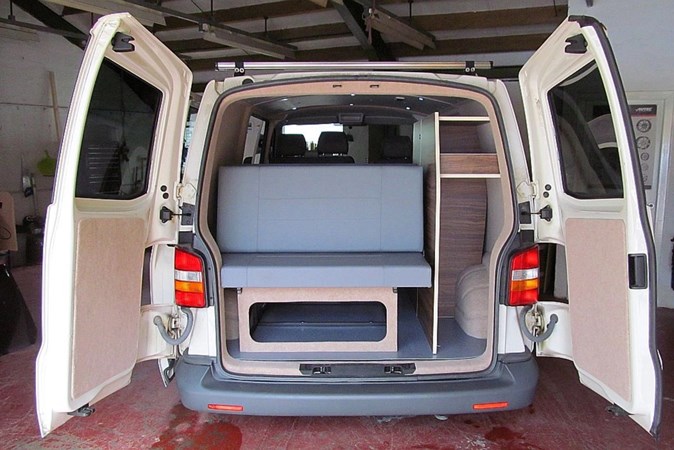
Other upgrades
There’s a thriving industry built around modifying vans in all sorts of ways. There are wheels, suspension kits, body styling elements and much more available off-the-shelf, or you could come up with your own modifications. Volkswagen, Mercedes and Ford vans are the best catered for.
Build quality
There’s nothing like driving along a typical British country road for revealing every squeak and rattle in a vehicle. A poorly built camper conversion could drive you mad with the racket; it could even fall apart in no time. So it’s best to over-engineer the build. Even if you’re only using simple butt-joints, apply lots of glue and extra screws/nails to make sure they’re really secure. Pad cupboard doors and drawers so they don’t bang, and make sure there are no sharp edges tgo catch yourself on.
Using a conversion kit
If you’re not confident about designing and building your own campervan conversion, there are still some options available to you. There are lots of plans available on the internet, and there are companies that sell flat-pack kits. Some kits just come with the joinery, others are more comprehensive. Be sure to do your research on a kit’s quality and how good the instructions are.
Adding weight to the vehicle
Before starting a conversion, you should be aware of your vehicle’s payload – it’s listed on the V5C document. Everything you add to the vehicle during the conversion process must come within its payload limit and its gross vehicle weight (GVW) – that’s the maximum weight the vehicle can be. GVW includes everything that’s in and on the vehicle; it’s easy to forget about the weight of the water tanks and occupants when doing your calculations.
Best large vans for a campervan conversion
These are the best large vans for doing a DIY campervan conversion.
Fiat Ducato
Around three-quarters of new campervans sold in Europe are based on the Fiat Ducato. The manufacturer specifically targets that market and offers all sorts of adaptations that make the conversion process easier.
It’s also a best-seller in van form, so there are lots of affordably priced used examples to choose from. It’s not especially sophisticated to drive and reliability issues aren’t unknown, but there’s a lot of camper conversion knowledge and expertise to drawn on.
Read our full Fiat Ducato review
Search used Fiat Ducatos for sale
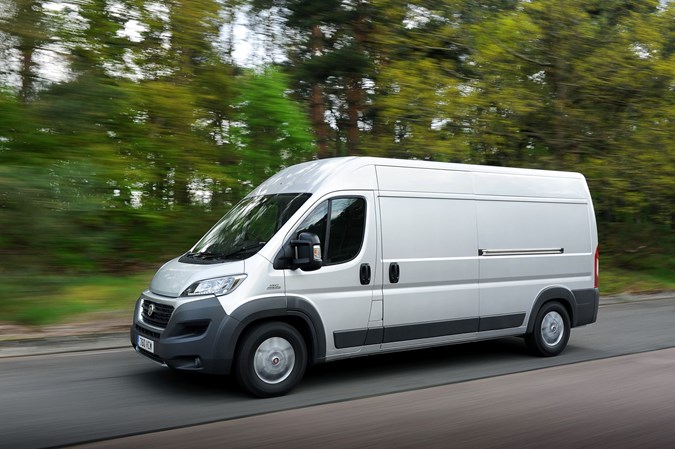
Mercedes-Benz Sprinter
The Sprinter is a favourite for DIY camper conversions because it’s available with a massive 17.0 cubic metre load volume combined with a 3,500kg GVW. It’s also lovely to drive and very reliable so long as it’s been looked after properly. The Mercedes brand counts for a lot, as well.
There are lots of Sprinters to choose from on the used van market. They’re often pretty basic in the cab but you can easily upgrade the infotainment and seats – there’s a wealth of companies that can supply all manner of parts and knowledge. The only real downsides are that the Sprinter costs more than all its rivals, and payloads can be on the low side.
Read our full Mercedes-Benz Sprinter review
Search used Mercedes-Benz Sprinters for sale
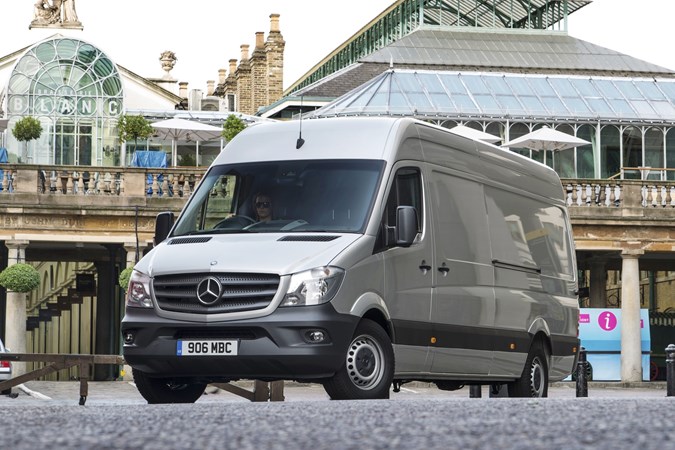
Ford Transit
Well, it’s the best-selling van in the UK, so we had to include it. There’s a huge range of engines, trim levels and bodystyles to choose from, there’s probably at least a dozen for sale within five miles of your home, and it feels great to drive.
Post-2016 Transits fitted with EcoBlue diesel engines have some reliability issues, particularly with the fuel injectors, otherwise Transits of all types really only give trouble if they’re neglected. Camper conversions are relatively straightforward and there’s plenty of collective knowledge to draw on.
Read our full Ford Transit review
Search used Ford Transits for sale
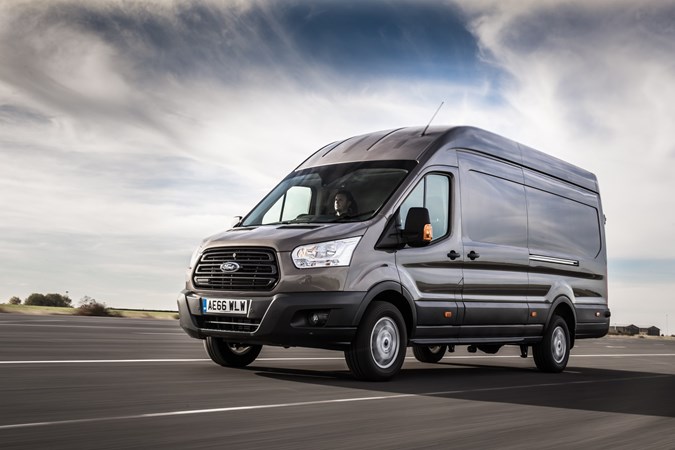
Best medium vans for a camper conversion
These are the best medium-size vans for doing a DIY campervan conversion.
Volkswagen Transporter
Probably the archetypal campervan, thanks in no small part to Volkswagen’s own hugely popular California. Besides that, there’s an entire industry built around turning the Transporter into a camper, plus massive amounts of other modifications you can make.
In van form, there are lots to choose from. There are a few things to bear in mind, though. The cab can be really basic, high-top roofs are rare so you’ll almost certainly need to budget for a pop-top, payloads are relatively low, prices are relatively high. But, as we say, there’s so much knowledge out there, it’s probably the easiest van to convert into a camper.
Read our full Volkswagen Transporter review
Search used Volkswagen Transporters for sale
Read our Volkswagen Transporter T5 campervan buying guide
Read our Volkswagen Transporter T4 campervan buying guide
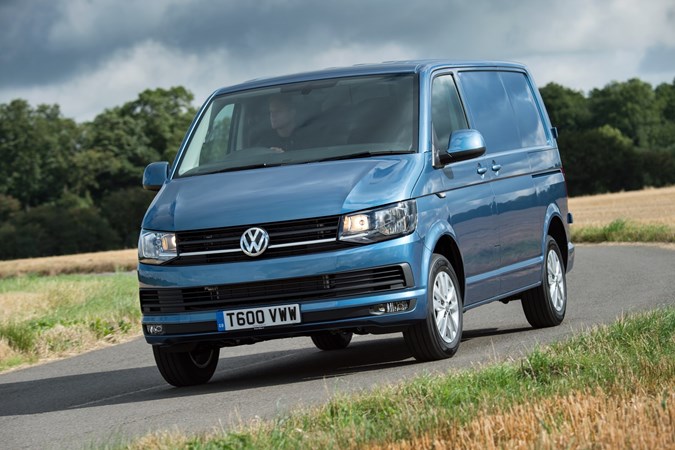
Ford Transit Custom
We’re big fans of the Ford Transit Custom at Parkers. It’s just so good to drive and its cab is full of clever storage spaces. There’s also a huge range of models to choose from, it’s generally robust and reliable, servicing is cheap and spare parts are plentiful. And there’s thousands of them on the used market.
The Transit Custom has only started to become a popular base for camper conversions in the last five years or so, so there isn’t currently a vast amount of knowledge on the process – but that will improve with time. It’s not exactly a complex vehicle, anyway, so there are few traps to fall into.
Read our full Ford Transit Custom review
Search used Ford Transit Customs for sale
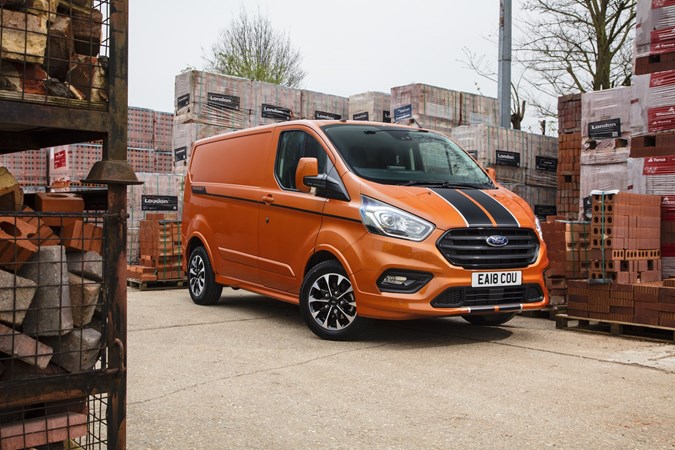
Renault Trafic
The Renault Trafic (plus the related Vauxhall Vivaro and Nissan Primastar/NV300) is an increasingly popular base for a campervan conversion. We think its distinctive style is a large part of the appeal, but it’s pleasant to drive and surprisingly capacious, too.
The Trafic and its derivatives – particularly the Vivaro – are plentiful on the used market and there’s a growing knowledge base on them. You’ll certainly stand out from the crowd in one.
Read our full Renault Trafic review
Search used Renault Trafics for sale
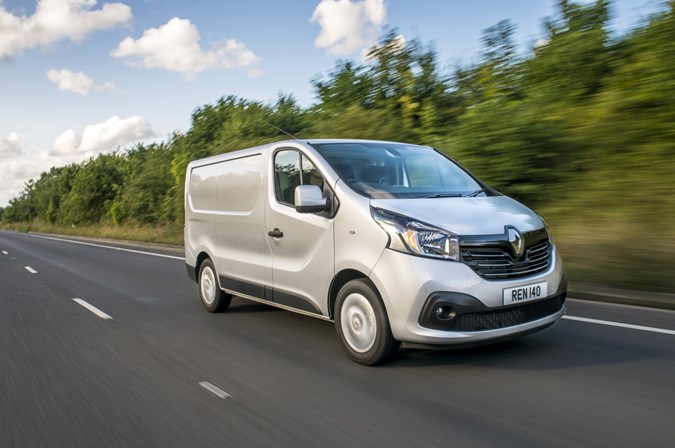
Just so you know, we may receive a commission or other compensation from the links on this website – read why you should trust us.
Just so you know, we may receive a commission or other compensation from the links on this website - read why you should trust us.


























